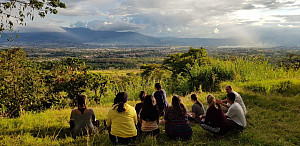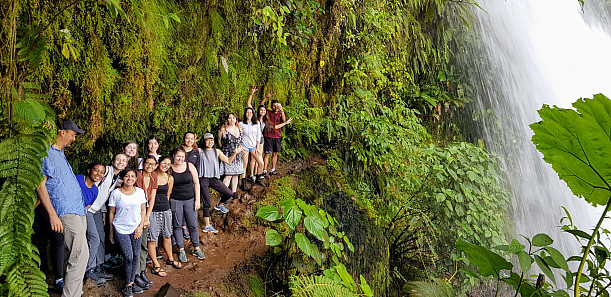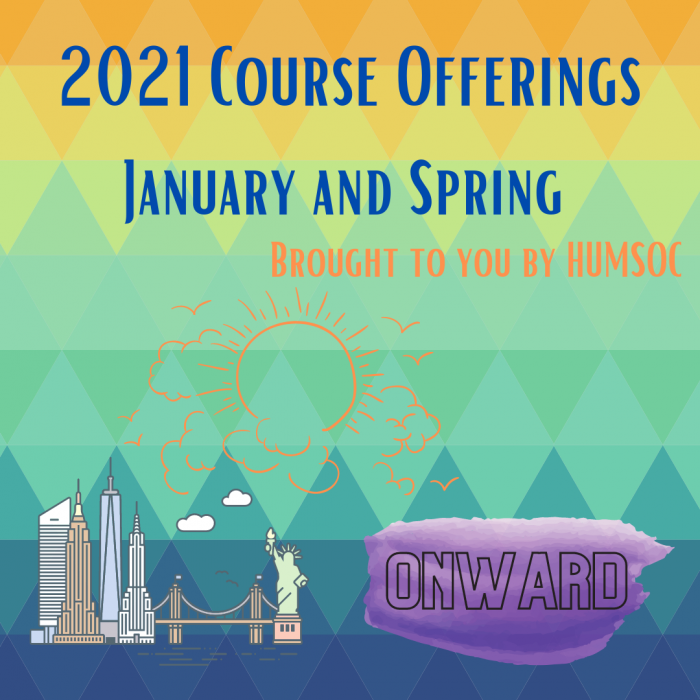MMC in Costa Rica: January Travel Course (Photos)
Open gallery

Just after the wheels touched town at San José International Airport in Costa Rica, Dr. Andreas Hernandez and his 12-student cohort made their way north to Alajuela where their accommodations, Widener University’s Cares21 facility, were located in the small town of San Pedro de Poás. Their Costa Rican co-teacher, Tomas Dozier, Director of the NGO ADE, was awaiting their arrival, ready to engage the Americans with his decades of farming and development experience.
For the next fourteen days, the group would take part in a number of academic and cultural adventures, studying economic development and sustainability through a variety of lenses while visiting important sites of the eco-tourism and conservation movements.
One of the first major activities of the trip was visiting Jim Stewart, founder of Seattle’s Best Coffee, who some refer to as the “Godfather of the Northwestern Coffee Boom”. During their visit to his Costa Rican farm, Stewart discussed with students his work to develop ways of growing more sustainable coffee while treating workers well and providing quality coffee. The group spent the remainder of the afternoon harvesting wild coffee, later making coffee tea with the pulp from collected beans.
Other excursions included;
- A visit to USAID, the United States Agency for International Development, studying resilience infrastructure and geopolitics,
- A tour of University for Peace, part of the academic wing of the United Nations system, a 700-acre campus within a natural reserve of both primary and secondary forest
- A meeting with Chilean NGO Techo on development and connecting community/social needs with government services
-
A visit with the local governor’s office, vice governor, and sustainability officer to learn what happens on the ground in Costa Rica and how Costa Ricans score highest on the Happy Planet Index
After a busy first week, the course then transitioned its focus to ecotourism - how Costa Rica uses conservation for economic development - through several different models. “We were looking through different windows and scales into sustainable development. We were looking at the Costa Rican government, we were looking at NGOs,” explains Dr. Hernandez. “We were looking at grassroots social movements, and at cooperatives. We went to the largest and oldest coffee cooperative in Costa Rica.” Their excursions blended studies in privatized tourism, the country’s extensive National Parks system, community development, and the relationship between the urban and the rural. Students hiked up an active volcano, visited La Paz waterfall gardens, saw natural hot springs, and traveled to Manuel Antonio National Park.
“A class on sustainability wouldn’t have worked any better than it did in Costa Rica,” wrote International Studies/Environmental Science senior Sarah Shapiro. “We learned that understanding and facilitating relationships between people, animals, plants, and systems are some of the major keys to a sustainable planet. This concept couldn’t have been more reflected in the group dynamics, and the examples that we examined during our two weeks. It was an amazing trip.”
Annie Bleiler, a first time Study Abroad student, found the two weeks a “perfect” fit. “We were able to fit so much in, and learn about so many new perspectives… Costa Rica is the most sustainable country in the world…so it was really eye-opening to be immersed in the sustainable culture, as opposed to just learning about it sitting in a classroom,” she commented. “I also loved how I made eleven new really authentic friendships with the other people on the trip.”
Dr. Hernandez had a similarly moving experience during his travels this past month. “The ability to be in a place and build community and relationship and then do things is a powerful form of learning. I think we really took advantage of that and enjoyed it.”

Published: January 30, 2019
